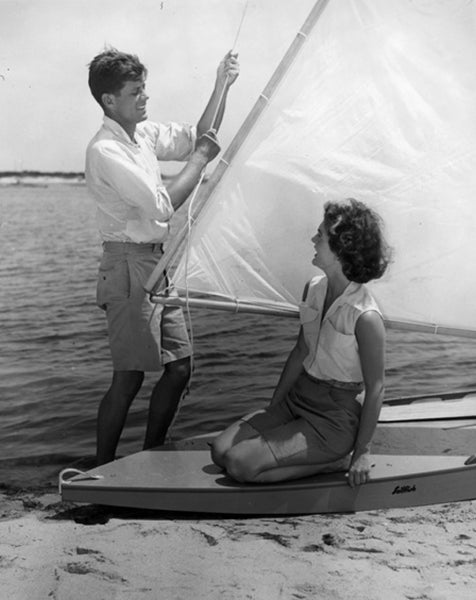Your Cart is Empty
Women's Shirts 40% Off Through May 11. Discount Applied at Checkout. Always Free Shipping.

It's a large universe of shirts out there but when deciding what to make for one of our next patterns, there actually wasn't much debate - the classic Oxford Cloth Button Down (or "OCBD" as many people simply call it) was the obvious pick.
While many shirt fabrics have a distinctive provenance - the Prince of Wales check, the Bengal Stripe - there probably isn’t a more famous or longstanding shirt style than the Oxford Button Down. What’s more, it’s a distinctively American creation, rather than - as with so much in menswear - having been pilfered from our English or Italian brethren, both longstanding sources of menswear inspiration.
So what makes the Oxford special? First, some history.
History
Oxford fabrics - known for their soft but sturdy texture - first arrived on the scene at the latter part of the 19th Century as part of a package of fabrics named after the era’s most famous Universities - Cambridge, Oxford, Harvard, and Yale (although only the Oxford really remains you can still find a “Cambridge” fabric if you look a bit).
Whether the respective schools demanded separate fabrics, or whether this was clever marketing on the part of clothiers to win over up-and-coming graduates (we’re betting on the latter), their popularity soared. The Oxford, in particular, became an instant classic, its basketweave construction making it perfect for casual or formal occasions.

The button-down - the other critical ingredient of the OCBD - also has an interesting provenance.
It’s thought to have been first created by John Brooks (of Brooks Brothers - the grandson of the founder) who introduced it right around the turn of the century. Brooks had recently been in London, and, befitting a gentleman of his time and place, had been watching several polo matches, noting the difficulty that the players had in keeping their collars from flapping up in their faces. Some had cobbled together temporary fixes (pins, extra starch, etc.) but Brooks realized that there was nothing like a sturdy button to do the trick. He ordered his shop in NY to make some of these new button-downs and the rest, as they say, is history.

Brooks’ Oxford Cloth Button Down was an overnight success, and went on to become closely associated with the Ivy league and a mainstay of prep fashion more broadly.
Wearing It
Today OCBD’s come in a host of shapes and sizes, from traditional boxy sport shirts to more contemporary slim cuts suitable for the office or for client meetings.
As a general rule, the button-down collar is meant to be worn without a tie, at least traditionally, yet as with many rules this one can usually be broken without any sideways glances.
Most OCBD’s, including ours, come with a chest pocket, which tend to give them a slightly less formal feel. And while you can find them without, it’s generally considered a standard component of an oxford shirt (not to mention a handy place to tuck a pen, glasses, or tickets).

Lastly, there is the fabric itself, which is critical when choosing an Oxford that will last for years to come.
While many fast-fashion companies have hopped on the OCBD bandwagon, the quality of the materials and the construction is often wanting (to put it bluntly). A good, properly-made Oxford shirt should have a nice, hefty weight to it, the kind that you can reach for when the weather is a little cooler and which can withstand plenty of wash and wear (or even an impromptu polo match if you happen to come across one!).
In fact, many Oxford shirt aficionados genuinely prefer these classics to have a comfortable, worn-in look to them, the kind of thing that gets better with age. An OCBD, they’ll tell you, really hits its prime when you’ve had the chance to wear it in a little, with the collar developing a distinct roll to it.

In short, you’d be hard pressed to find a shirt that works well in such a variety of situations - one that’s equally comfortable in the scholarly halls of any University but that can withstand a little rough-and-tumble activity should the occasion call for it. We’re not sure about you but here at Tuckerman we find that there’s something practical, meritocratic - indeed, deeply American — about it.